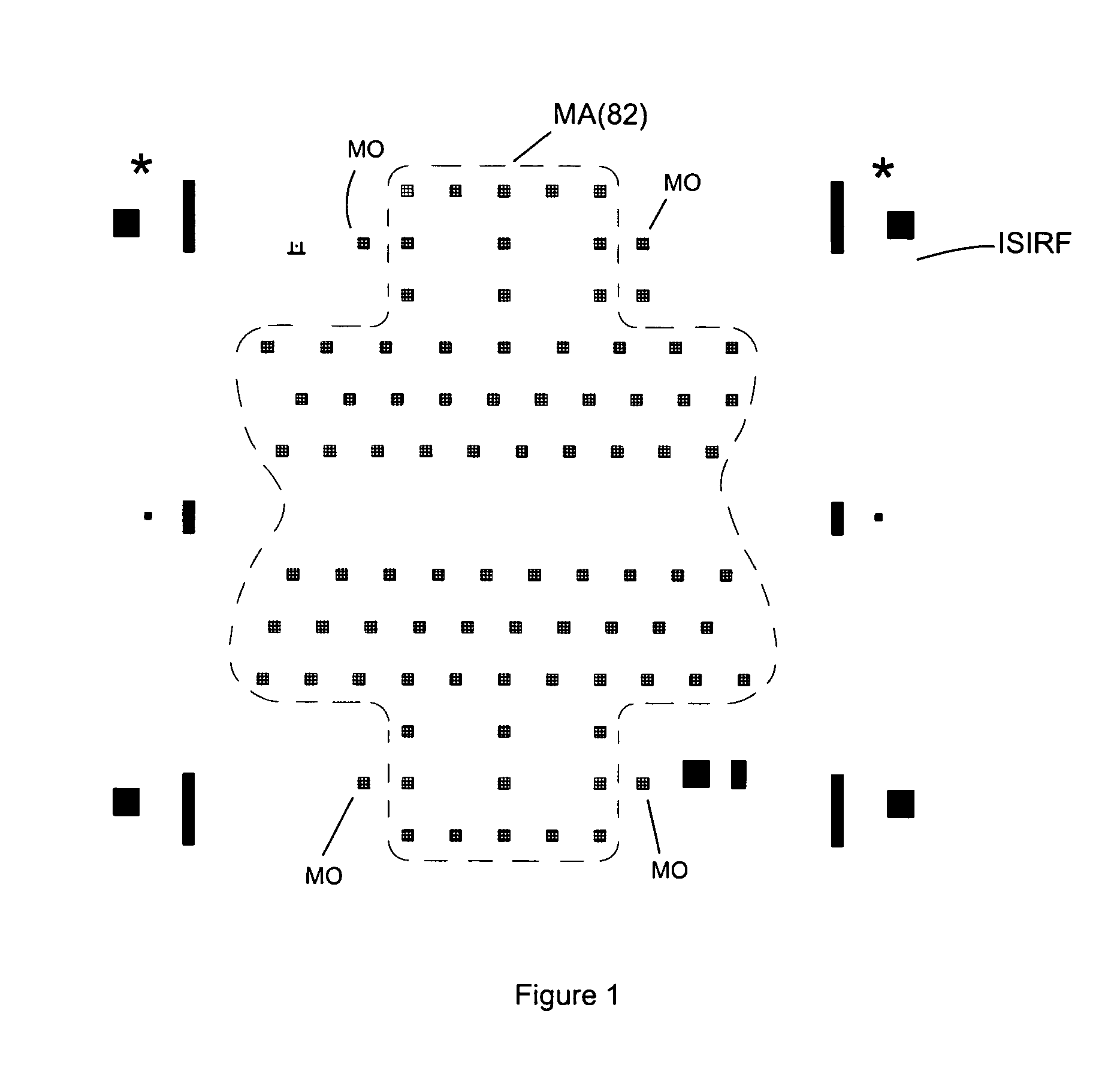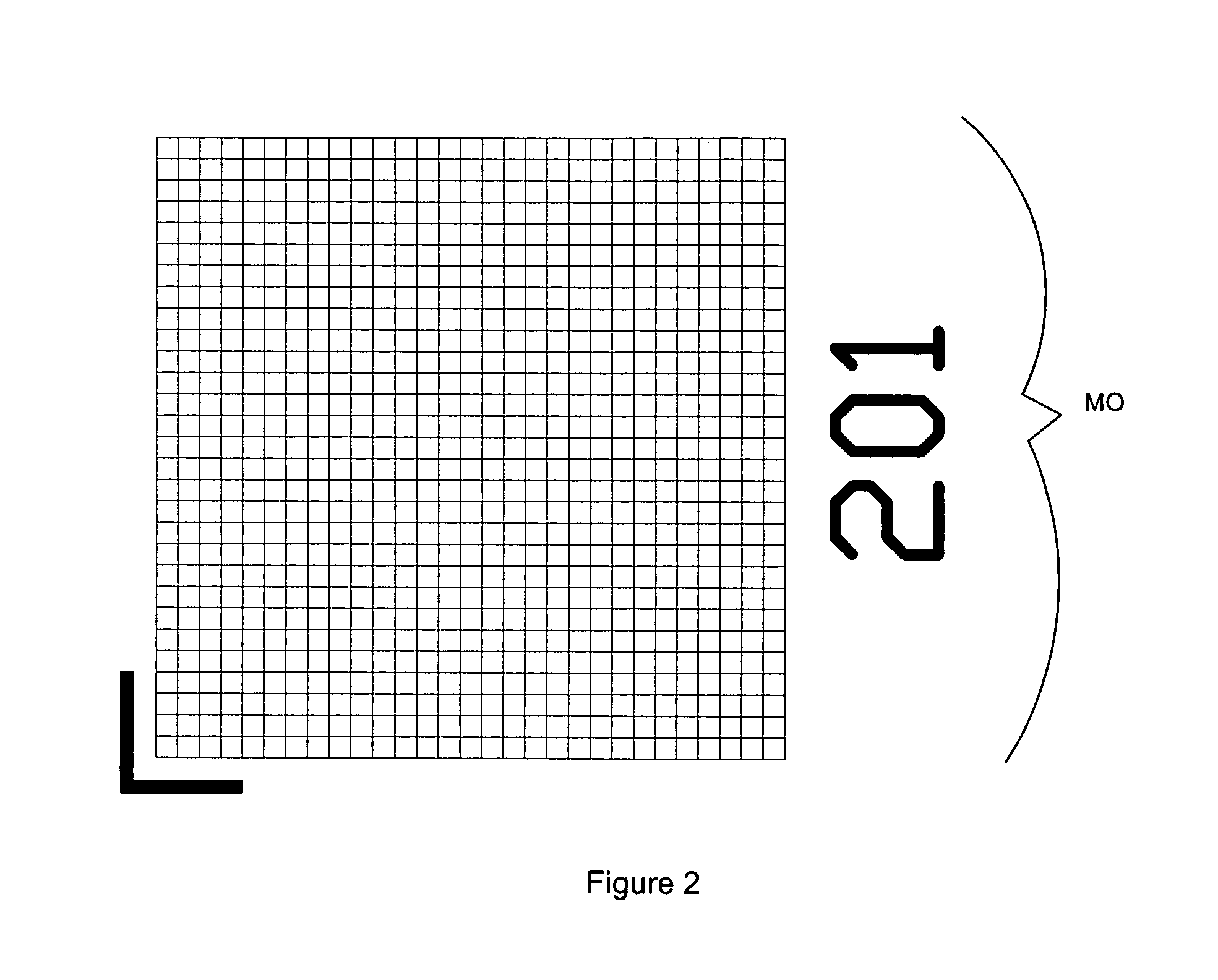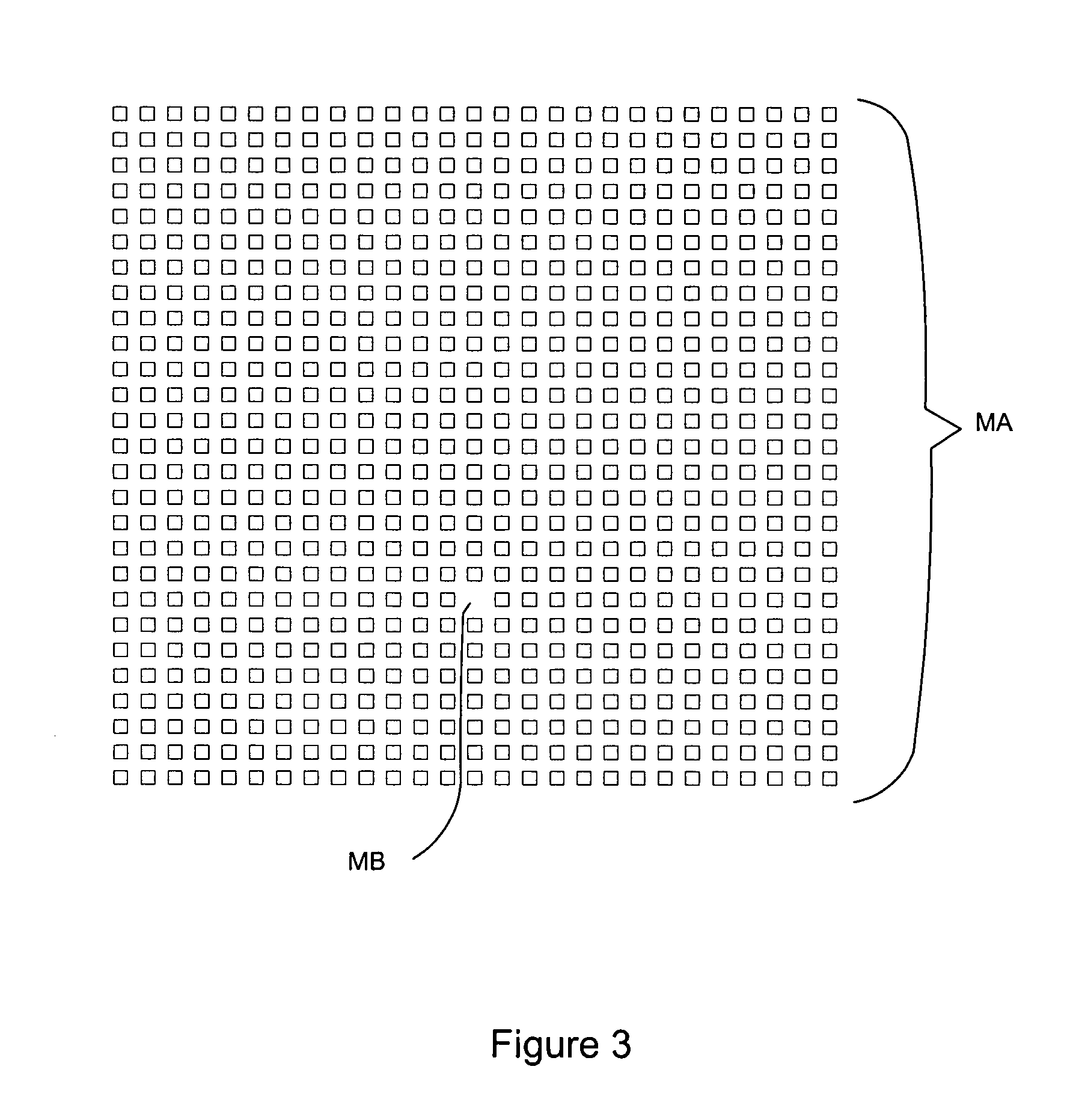Method and apparatus for embedded encoding of overlay data ordering in an in-situ interferometer
an interferometer and overlay technology, applied in the field of optical metrology, can solve the problems of data corruption, high cost, and high cost of a photolithographic system
- Summary
- Abstract
- Description
- Claims
- Application Information
AI Technical Summary
Benefits of technology
Problems solved by technology
Method used
Image
Examples
first embodiment
Missing Teeth
[0038]FIG. 6 shows a schematic of operation and illustration for in-situ interferometers. An example of an in-situ interferometer is detailed in U.S. Pat. No. 5,978,085 supra. The In-Situ Interferometer, (ISI) according to U.S. Pat. No. 5,978,085 supra is placed in a projection imaging tool (PIT). FIG. 6 is a block diagram illustrating portions of an In-Situ Interferometer exposure sequence. FIG. 6 illustrates an illuminator block (ILB) and a projection lens block (PLB). During exposure, an encoded face of an ISI (ISIRF) is illuminated by illuminator block, ILB, and an illuminator modification optic (L) that is part of the ISI. Angular subtense and chief ray direction are modified in a position dependent sense by pinhole (PH) and a projected field (PF) consisting of a multiplicity of projected aberration carrying structures (PMA)—images of which are printed on wafer W during the first exposure. Following the first exposure, reticle blades in ILB (not shown) are adjusted...
second embodiment
Second Variation of Second Embodiment
Non-Coupling Offsets with Global NCO Adjustments
[0097]While the second embodiment detailed NCO patterns on a local level for each field point using possibly a curl pattern (FIG. 10) for each field point the second variation of the second embodiment adds or superimposes a global pattern across the reticle field consisting of say ˜25 field points or 25 groups of MA and MO patterns (the number or MA patterns depends on the ISI reticle design per U.S. Pat. No. 5,978,085 supra). This just means that in addition to having identical curl type patterns for each MA field point (FIG. 10) one can also modify each curl pattern to give a global relationship as well as a local relationship (FIG. 14). FIG. 14 is a schematic illustrating curl patterns of varying magnitude and direction are shown at four separate field points (FP1 through FP4). For example, one might simply add a constant value (DXY) to each NCO field point vector (DXNCO, DYNCO) (IX, IY) or (DXNC...
third embodiment
Alignment Attribute CD Width Adjustments
[0102]If the overlay reader is equipped with an optical CD measurement tool it is also possible to encode an ISI reticle by modification of the physical size (width) of the alignment attribute instead of removing MA or MO structures as describe in the first embodiment. For example in the case of a bar-in-bar pattern one can simply change the bar-width, BW, (not length) of an alignment attribute substructure from say 1 um to 2 um (see BW FIG. 4) for select MA patterns. The benefit of this technique is that it is independent of overlay measurement (as long as the signal to noise ratio is not affected on the read out signal) and does not require interpolation to reconstruct the aberration wavefront (see above); however, it does take more time to process a wafer using CD measurements. The process is the same as described in FIG. 5 except here we use modified bar-in-bar substructures (increase in the physical thickness of a bar for example) and the...
PUM
 Login to view more
Login to view more Abstract
Description
Claims
Application Information
 Login to view more
Login to view more - R&D Engineer
- R&D Manager
- IP Professional
- Industry Leading Data Capabilities
- Powerful AI technology
- Patent DNA Extraction
Browse by: Latest US Patents, China's latest patents, Technical Efficacy Thesaurus, Application Domain, Technology Topic.
© 2024 PatSnap. All rights reserved.Legal|Privacy policy|Modern Slavery Act Transparency Statement|Sitemap



